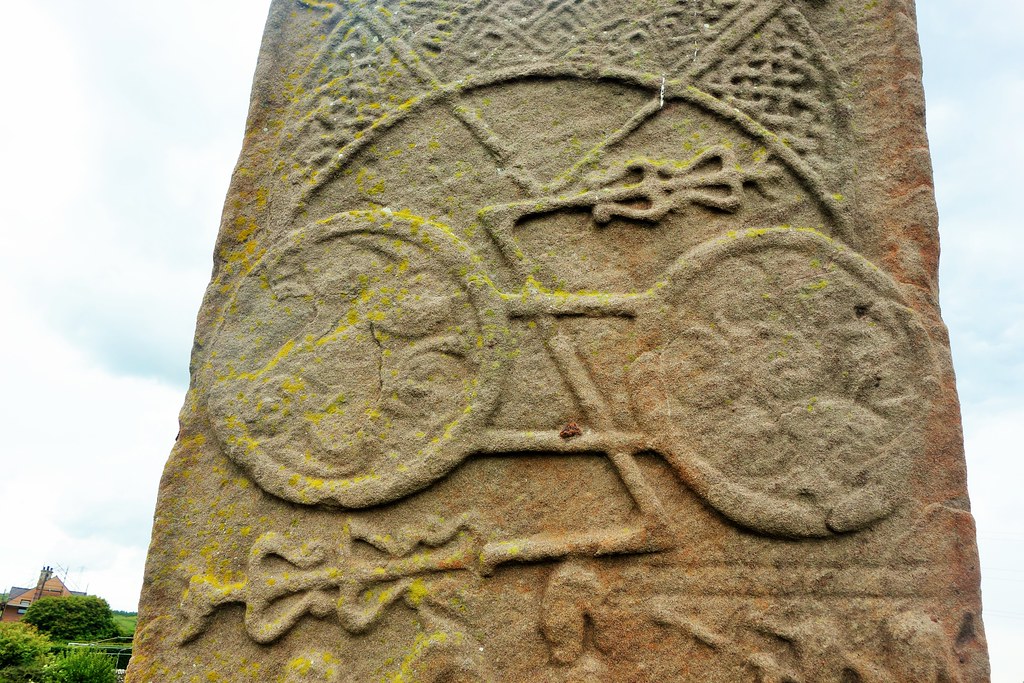The Picts and Scotland's linguistic heritage
This evening, my blog has been prompted by a media report to effect that an academic has proposed an overwhelming argument that the Picts (indigenous people of what is now Scotland) spoke a language that was closely related to an ancient form of Welsh.
As a long-term student of Scottish place names the new development comes as no surprise. In fact, I was under the impression that the Picts connection with the Brittonic/Welsh language had already been settled.
By way of background, the Picts were a loose, tribal based, confederation of native peoples who dominated the northern and eastern parts of what is now Scotland during the late iron-age and early medieval periods, i.e for about 1000 years up to around the mid -ninth century AD when their culture was subsumed within that of the incoming Gaels (Scots) who emanated from Ireland around AD 500.
The Picts were probably descended from native peoples who had established themselves in Scotland following retreat of the glaciers at end of last ice age. Whilst the Pictish educated elite may have understood Latin they have left no record of their native language.They have, however, left a legacy of many elaborate stone carvings or 'symbol stones' as illustrated above and below. although meanings of many of the abstract symbols are not understood today.
We have knowledge of the Picts because the Romans encountered them and recorded information.In fact, the Picts were the principal adversary of the Romans in the north of Britain. The Romans called the Picts the 'painted people' because of their elaborate body decorations. Although having only primitive military technology, the Picts were fearless warriors and were quite prepared to take on the Romans who were the super-power of the day.
Scotland has an eclectic linguistic heritage as a function of migrations and invasions, viz:
- Assume Welsh/Brittonic was the native language of the entire country until arrival of the Gaels from Ireland around AD 500.They arrived on the west and progressively gained control over the mainland which was cemented in the 9th century. During this period the Gaelic language took hold at expense of Welsh.
- During latter stages of the Gaelic expansion Norse (Viking) settlement occurred in the outlying areas of modern Scotland including Shetland, Orkney, Caithness, Sutherland and the Western Isles. These incomers used the Old Norse language which is reflected in place names today. In fact, Norn, a North Germanic language was spoken in remote Scottish island locations until the mid 19th century. The Norseman were finally defeated by the Scots at the Battle of Largs in AD 1263 but Norwegian control of Orkney and Shetland continued until 1472.
- A form of English was introduced from the south as a result of migrations of Anglo-Saxons from Germany following collapse of the Western Roman Empire in the 5th century AD.
- In Scotland today there are at least 16 places beginning 'Aber' (as in Aberdeen).This term means estuary or confluence and is cognate with modern-day Welsh place names such as Aberystwyth, Abersoch and Aberdaron all of which are coastal communities.
- The Welsh word for headland is pen which can be found in Pennan, Aberdeenshire, N.E. Scotland.
- The Welsh word for radiant/beautiful is pefr as found in Strathpeffer in Easter Ross, Scotland and meaning 'vale of the radiant stream'.
- The city from where I am writing this, Glasgow, is pure Welsh/Brittonic being derived from glas cau meaning 'green hollow'.
Dupplin Cross, circa AD 800, central Scotland



Comments
Post a Comment